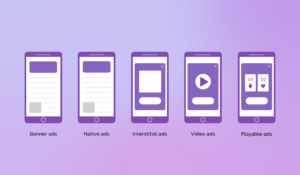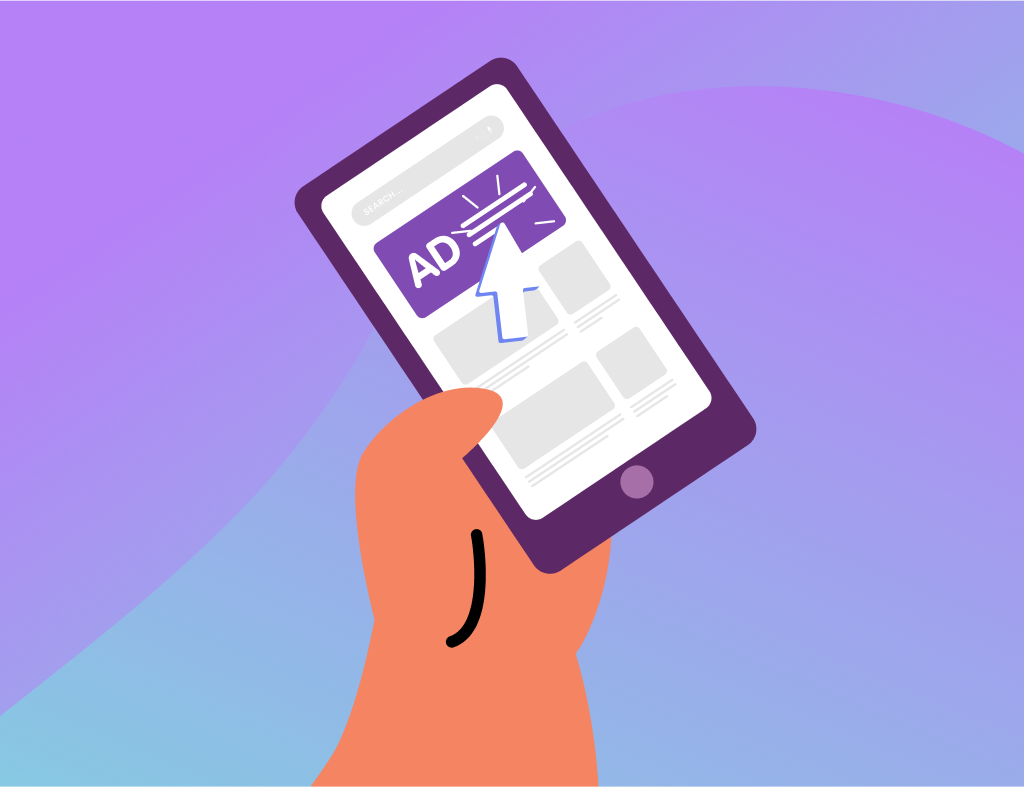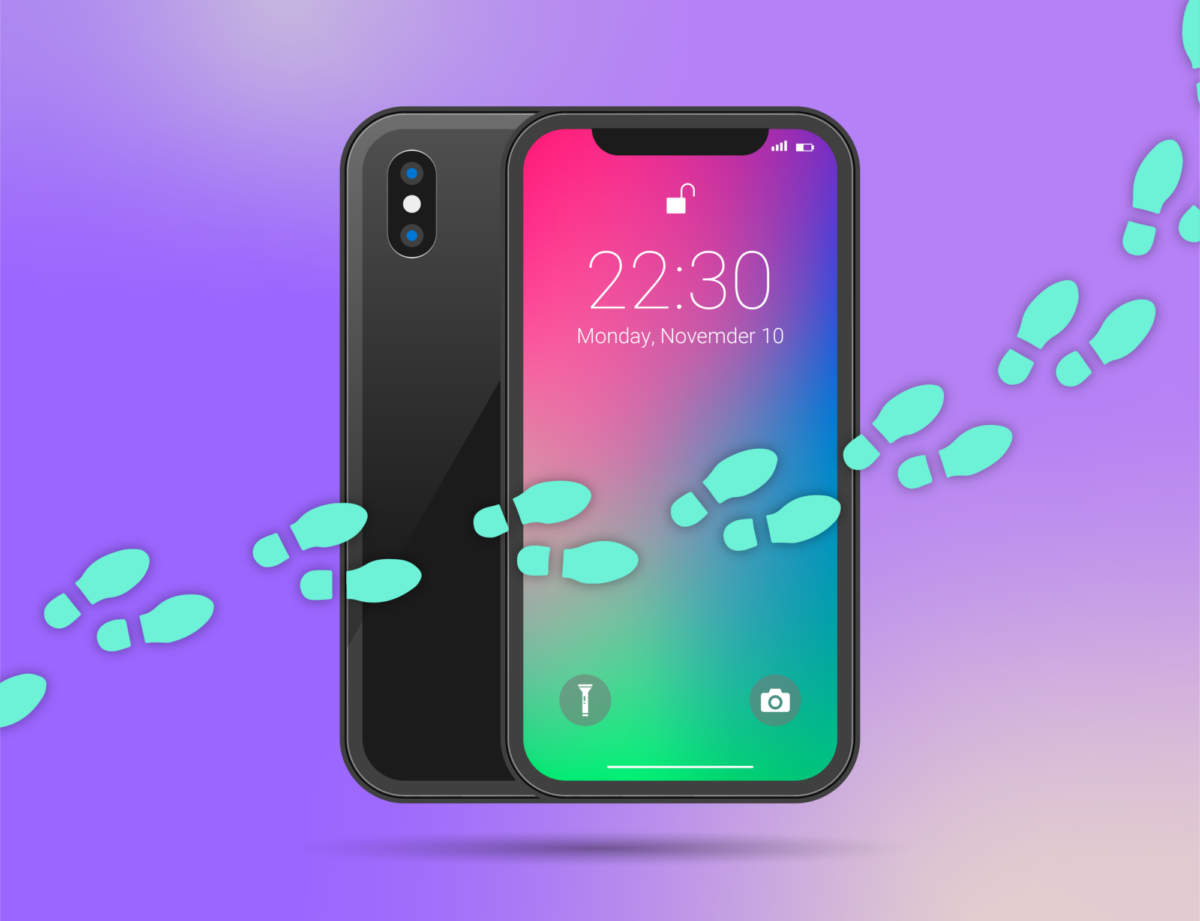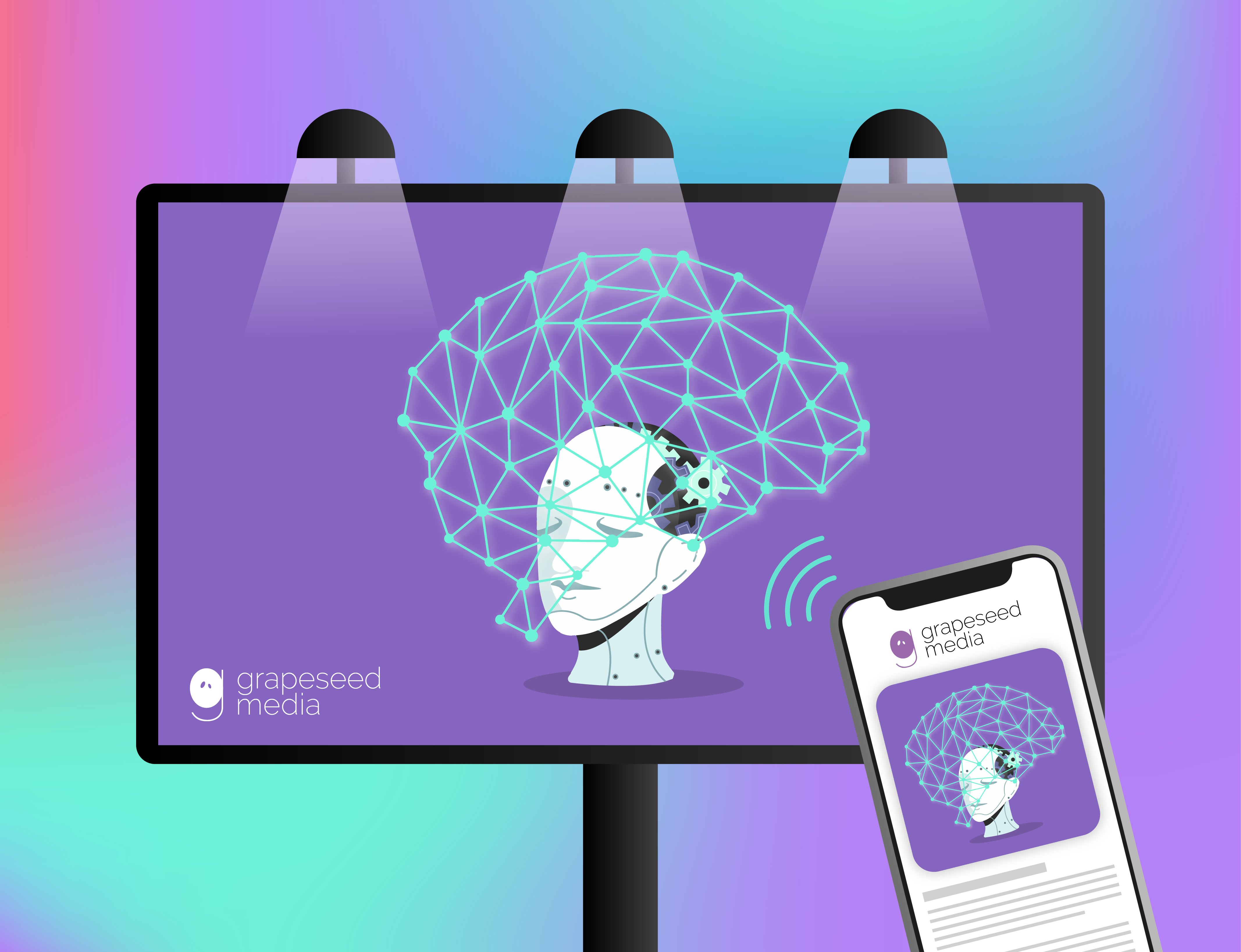The number of mobile devices operating worldwide stood at 14.91 billion in 2021.
Not only that, but people are spending an average of 4.2 hours on these devices each day. One survey conducted by Statista revealed that nearly half of the respondents spent between five and six hours on their phones every day, not including work-related mobile phone use.
With people spending so much time on their mobile phones, it only makes sense that mobile advertising is growing. After all, you want to leverage the channels people are using to find information to make your advertising campaigns that much more effective.
Mobile advertising has become so popular that it’s set to outpace desktop ad spending in 2022.
If you would like to capitalize on the power of this type of advertising then this guide is for you. It covers everything you need to know about using mobile advertising in today’s market, as well as how you can get started.
There’s lots to cover, so let’s dive right in.
What is Mobile Advertising?
Mobile advertising refers to advertisements and ad campaigns specifically designed for mobile devices such as smartphones, tablets, and wearable devices.
Creating effective mobile advertising campaigns comes down to choosing the right ad type. Here are the most common formats:

Banner Ads
These ads are often in the form of a banner that’s placed at the top or bottom of the screen.
Banners will usually have some text, plus static or dynamic images. As such, successfully creating them will depend on factors like selecting the right text, colors, images, and call-to-action (CTA).
Banner ads have been around from the beginning of web advertising, but they are still relevant today thanks to how simple, efficient, and cost-effective they are. They are probably the most widely used form of mobile ads.
Native Ads
Native ads are somewhat similar to banner ads. The big difference is that they blend better with the mobile environment for an optimal and cohesive user experience. Put another way, native ads fit into the editorial flow of a page or the elements of an app, so they are not that intrusive.
These ads often appear in the recommended content sections of social feeds and web pages. For example, native ads are often embedded between two pieces of content within a blog.
Interstitial Ads
Ever had an ad pop up just as you try to open the next level of a game? How about when you’re using an exercise app, and every time you finish your workout you have to watch an ad before you can see how many calories you burnt?
All these are examples of interstitial ads. These ads are displayed across the entire screen of a mobile device at transition points (such as when you are trying to open a game’s next level). The ads come up at these points so as not to interrupt a user’s flow of activity.
Since they are shown on a full screen, interstitial ads have to be creative and engaging otherwise they will end up being irritating, annoying, and intrusive to the user.
Video Ads
These ads are pretty straightforward; they are the ones that have video content within them.
Video ads make a lot of sense in the mobile advertising space since close to 90% of consumers view videos on mobile. It’s probably to do with the fact that mobile devices are convenient and always handy.
Because they create higher engagement levels, video ads are effective in driving conversions and boosting sales.
Playable Ads
This highly engaging ad format is popular in the mobile gaming space. Playable ads are interactive, allowing users to experience some gameplay before installing an app — they essentially act as game demos. Playable ads are great for reducing uninstallation rates since users can gauge interest before installing an app.
Each ad type is best suited to a specific scenario, but no matter the format you choose, mobile advertising provides several benefits.
The Top Benefits of Mobile Advertising
Perhaps the biggest benefit of mobile advertising is the easy access.
As highlighted earlier, so many people are using mobile devices and spending a lot of time on them, so it makes sense to focus on mobile ads. The accessibility of mobile phones means that your ad campaigns end up where people can see them.
Let’s have a look at more reasons why using mobile advertising is a great idea.
Availability of Multiple Advertising Channels
Besides having multiple ad formats, mobile advertising is supported by various advertising channels you can use to reach consumers.
These include:
- Mobile apps. In 2021, people spent a record-breaking 3.8 trillion hours on mobile apps.
- Mobile websites. Over half of all web traffic comes from mobile devices — it’s easier to check out any site or discover new brands on the go.
- SMS marketing. This is one of the simplest ways to reach your target audience. In fact, 75% of people don’t mind receiving offers via SMS.
- Push notifications. These are instant rich media or text messages with sales offers or announcements that are directly sent to a user on their mobile phone.
Personalization Capabilities and Context-Driven Advertising
Many people keep their mobile devices (particularly their phones) close at all times. Here’s the thing about these devices — they usually have geo-targeting abilities and they allow you to collect vast amounts of data which you can use to create more personalized ads. You can adjust your advertising based on a user’s location and preferences, for example.
Similarly, since people usually have their phones on them, it’s easier to create context-driven ads that inspire immediate engagement. Imagine you’ve just gone online to find a “restaurant near me.” If an ad of a nearby restaurant appears, complete with coupons, you will likely be more encouraged to try the place.
With mobile ads, you can improve click-through rates (CTRs), and conversion rates.
Ease of Results Tracking
Mobile ads are designed in a way that promotes interaction. As such, it’s easier to start tracking user responses immediately. You can see what’s working, and what requires tweaking or even scrapping from the campaign based on how your target audience is responding.
Cost-Effectiveness
When it comes to advertising, the issue of costs is never too far behind.
The good news is that mobile ads are cost-effective; they are significantly cheaper than traditional marketing techniques. In addition, ad clicks from mobile devices are 24% cheaper than those from desktop, yet they have a 40% higher CTR.
What makes mobile ads cheaper? There are several reasons, including the following.
- With targeting, you only reach customers that need to see a specific ad. This way, you don’t end up with unnecessary ad spend.
- Since tracking is easier, you can quickly figure out what’s not working before you blow your budget.
- Mobile devices are digital and so they are inherently cheaper than advertising platforms that require print resources or costly physical ad spaces.
7 Tips for Getting Mobile Advertising Right
With so many benefits, it’s tempting to jump right into creating mobile ad campaigns. While that’s not a bad idea, it’s important to remember that many factors go into developing successful campaigns.
You need some best practices to guide you, otherwise, your campaigns may not be as effective as you intend. Here are some tips and strategies to help you create your ads the right way.
1. Have Clear Goals and Key Performance Indicators (KPIs)
When you create campaigns with no specific outcomes or goals in mind, you’re setting yourself up for failure. You’ll likely only be able to get not-so-great results.
If you don’t know what a campaign should achieve, how do you measure results? How do you know what needs adjusting and what doesn’t? You get the picture, right?
Examples of goals you can set include increasing sales figures, raising brand or product awareness, and increasing web traffic.
2. Understand Your Audience
You can’t reach your target audience successfully if you don’t know who they are. Identifying and understanding your audience allows you to focus your efforts on the people who are likely to interact with your ads and take the action you want.
3. Adopt a Cross-Device Strategy
While talk of mobile ads puts the focus on mobile phones, remember that tablets and other devices are also part of the mix. Neglecting these other devices means that you may be missing out on a significant portion of your audience, and with it, a good chunk of potential leads and conversions.
4. Retarget, Retarget
Consumers are bombarded by huge amounts of information and apps daily. Competition is fierce across all marketing verticals, so it’s not uncommon for them to forget your brand. Retargeting people who have shown signs of intent is essential
5. Track, Measure and Optimize Ads before Scaling
For best results, ensure that you track and measure your campaigns to determine how well they are doing. This will not only help you to optimize your ads, but your entire advertising strategy as well.
Over time, you can fine-tune your campaigns to be more accurate, adaptive, and relevant, allowing you to generate positive ROI.
6. Don’t Just Focus on CTRs
By now you know the benefits of mobile advertising, including the fact that it has high CTRs. Nonetheless, while these rates are great for figuring out how your target audience is engaging with your ads, they should not be your sole focus.
The thing is, CTRs don’t show you the complete picture. For example, a campaign with a lower CTR, but a higher conversion rate is worth optimizing and scaling compared to one with a higher CTR, but a very low conversion rate.
7. Create Your Campaigns the Right Way
Finally, it’s important to create your campaigns the right way. You could manually manage your mobile ad campaigns, but this can become tedious and time-consuming, especially as you scale.
Alternatively, you can do things the automatic way, freeing up your time to focus on other critical business tasks. This brings us to an important concept — mobile programmatic advertising.
Redefining Mobile Ads with Programmatic Advertising
Programmatic advertising is the automated buying, selling, and deploying of ad placements. Using AI-powered algorithms, programmatic identifies the best audience for your product and automatically bids on the most relevant ad spaces, all in real time.
With mobile programmatic advertising, you can serve hyper-relevant ads at the right time. It’s also easier to measure how well the target audience reacts to a given ad.
Let’s delve a bit deeper into the benefits of mobile programmatic advertising.
- Specific targeting. Mobile programmatic advertising uses specific targeting methods to place ads based on factors like user behavior and intent, demographics, and location.
- High-quality user insights. Whereas most traditional advertising channels struggle to show a clear link between exposure and consumer behavior, programmatic enables advertisers to get much deeper user insights.
- Better quality data. Compared with other channels, programmatic gives advertisers access to a wider range of real-time, first-party data points that can be used to optimize campaigns and improve results.
- Cost efficiency. Since you have access to high-quality data, you can adjust your spending based on well-informed campaign analysis. This way, your money goes a long way in boosting overall campaign performance. Of course, you get this benefit in addition to having cost-saving targeted campaigns.
Limitless Possibilities with Mobile Advertising
At any given moment, millions of people are walking around the globe with a mobile device right in their hands. Imagine the possibilities this reality presents.
An effective mobile advertising strategy is necessary. And while you’re at it, it’s important to remember that we’re in an era where technology is completely revolutionizing mobile advertising as we know it.
Programmatic is transforming the mobile advertising space, and it’s a very good idea to get on board. That said, it’s crucial to have the right programmatic advertising partner.
Choose the wrong partner and your campaigns may not go so well. On the other hand, the right partner will help you design and deploy a campaign that puts you in front of the right audience and gets you the results you want.
At Grapeseed Media, we help our clients to serve timely, targeted, and cost-effective ads that drive engagement and sales. Interested in learning more about what we do? Schedule a call with us today!






